Firms tend to blame project managers or delivery teams when projects fall short of their margin targets.
But most of the time, it’s not all their fault.
Operational issues can easily set them up for failure before anyone starts doing the actual work.
It’s up to ops leaders to fix those problems so delivery teams can actually deliver.
In this article, we’ll walk you through a framework to protect your profits by addressing the root causes of project overrun instead of the symptoms.
The 3 silent drivers of project overrun
Project burn doesn’t happen overnight. It starts with underlying structural problems that we call the “hidden fault lines.”
Each one quietly erodes margins while teams work harder, not smarter.
1. Ambiguous scope
When deliverables are vague, teams usually end up overservicing to keep clients happy.
Ali Newton-Temperley, CEO of The Agency Growth Pad, has seen this countless times before:
If the client says they want a ‘website redesign,’ the project could mean anything from a reskin of a few key pages to a full rebrand with new copy, new photography, and new UX design.
Without a clear scope, a 20-hour project becomes 35 hours—tanking your margins. Designers get stuck in endless client revisions and developers wind up building features that weren’t in the original quote.
Further reading: Creating a Successful Project Scope
2. Effort blindspots
When it comes to developing realistic timelines, you can’t just add up pure billable hours and call it a day.
You need to consider admin activities (project management, account management, client communication, etc.) and risk buffers, too.
Otherwise, you’ll inevitably need to scramble to expand your timeline and budget.
When you only price the visible work and assume perfect execution, both the invisible hours and inevitable complications become pure margin loss.
Yad Senapathy, founder and CEO of the Project Management Training Institute, recalls a $12 million program where the team realized halfway through that specialized skills were needed, which ate up 8% of the budget in retraining costs.
Teams tend to plan on a best-case scenario and do not consider rework, quality assurance, or integration effort.
3. Delivery drift
Without clear milestones and regular check-ins, projects lose momentum through miscommunication and invisible delays.
Teams work in isolation, assuming others know their progress. Clients submit feedback that gets lost in email chains.
Project managers can’t see where bottlenecks are forming until it’s too late. Before you know it, what should have been a six-week project stretches to 10 weeks.
Hans Scheffer, CEO at Hello Print, puts it bluntly:
Overruns are not sudden. They usually creep in through a series of small blind spots that nobody wants to talk about. If your team claims everything is fine but small tasks continue to fall behind or costs are not being tracked, that’s often the start of a budget drift.
Why ops leaders must own the fix
Each of the three “fault lines” we covered fall under the same umbrella: poor operational decisions made before delivery even begins.
But it’s project managers that deal with the fallout, not ops leaders. PMs often inherit broken setups: vague scopes, unrealistic budgets, overbooked teams.
Then, they’re asked to deliver miracles with constraints they didn’t create.
Without operational guardrails, delivery turns into endless firefighting instead of smooth execution.
And here’s the truth:
Project managers can’t (and shouldn’t have to) fix what ops teams break.
PMs may oversee project delivery, but ops leaders control the conditions that make successful deliveries possible.
If you scope poorly, price unrealistically, or staff incorrectly, even the best project manager can’t save your margins.
True project burn control comes from operational systems, not heroic project management.
Ops leaders must own the first half of the project lifecycle—scope, pricing, and staffing—and maintain control through delivery to protect project profitability.
Want to dive deeper into the strategic role of operations? Listen to our podcast episode with agency operations leader Ryan McNamara.
The four principles for profit protection: scope, staff, price, control
These four principles give you a clear structure to protect margins before projects begin. Each one builds on the last, creating a simple, systematic approach to profit protection.
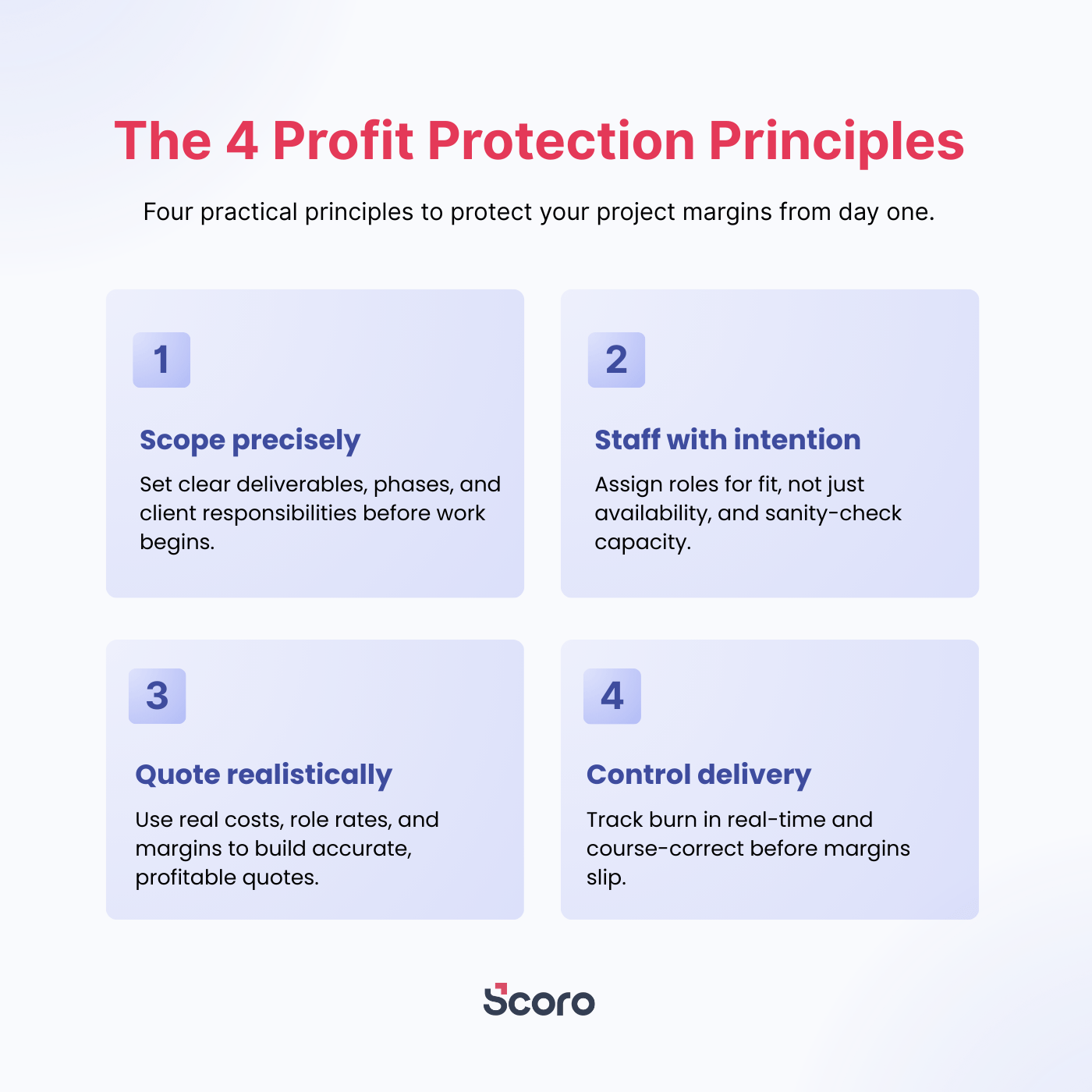
1. Scope precisely: Set clear boundaries for delivery before work begins
We get the temptation to rush through scoping, close the deal, and get to the “real work.” But an unclear scope is the fastest way to kill project profitability.
A vague scope leads to vague timelines, costs, and client expectations.
Your team needs to know exactly what they’re delivering and when work will be finished. If they don’t, you’re not ready to start.
To scope projects thoroughly, follow this process:
- Define the deliverables: List what’s actually being delivered. And be specific. For example, instead of “brand refresh,” break it down into “new logo with three variations, brand guidelines document, and social media template kit.”
- Align on success criteria: Make sure you fully understand and document the client’s vision for deliverables. This prevents clients from saying things like “the logo is too corporate” when you delivered exactly what was covered in the brief.
- Break work into phases: Phase-based work makes projects easier to manage and price accurately. Each phase becomes a mini-project with clear sign-off points and outcomes.
- List exclusions and assumptions: What’s not included in the scope? Be clear about what the client should expect. For example, maybe you’re only handling graphics but not the copy.
- Define client responsibilities: Spell out exactly what the client needs to provide and when, such as document access, feedback, and approvals.
Beyond the deliverables, make sure you have a solid understanding of the needs and goals driving them.
That first call is the golden opportunity to dig into not only what the project is, but why it’s happening—and crucially, why now. If you scope and plan a project without this context, you risk misaligned expectations later on.
Further reading: How to Create a Successful Project Scope
Scoro’s project quote templates let you standardize your scoping and quoting process across similar project types, so you’re not starting from scratch every time:
- Pre-load standard phases, deliverables, and line items
- Add default quantities, unit prices, and even roles/team members
- Use dynamic rates so new quotes always pull in the latest role prices and costs automatically
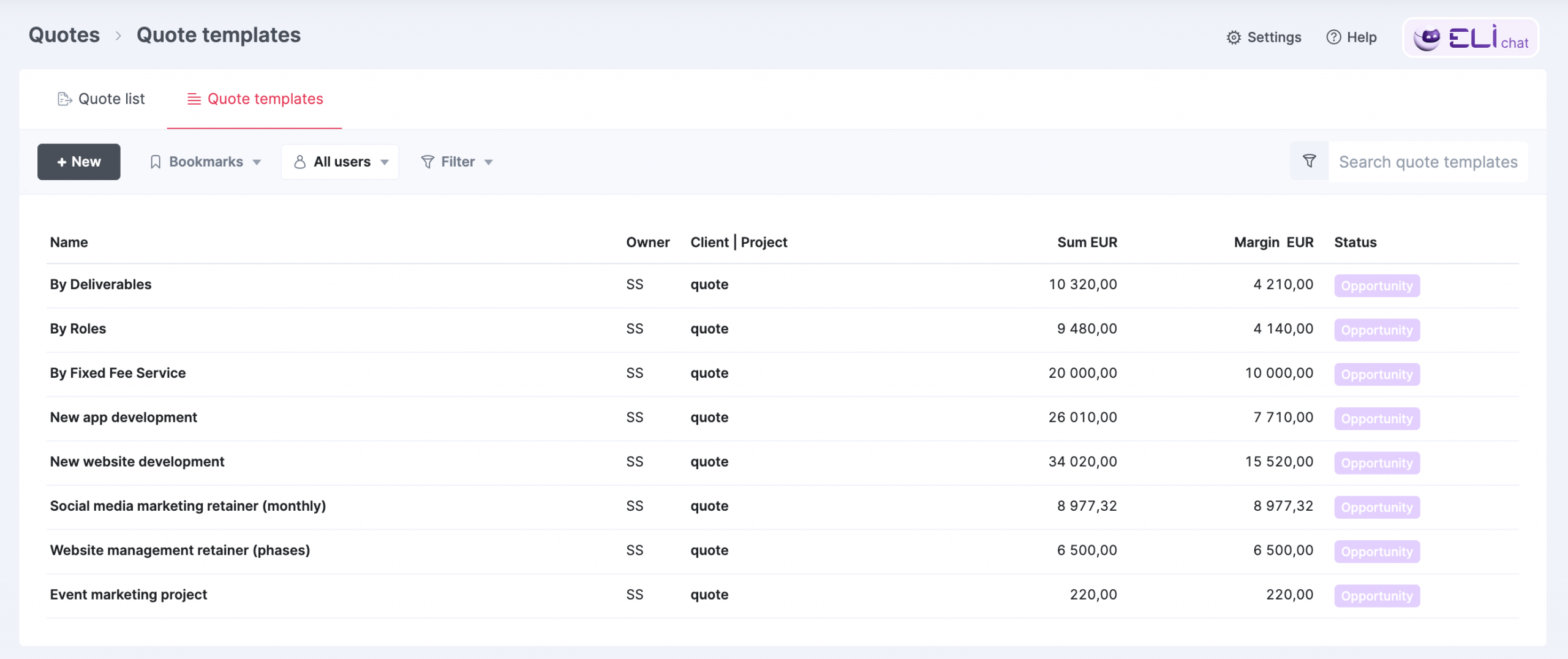
That way, when you create a new quote, everything—phases, deliverables, hours, rates, and roles—can be pre-filled in seconds.
This not only saves admin time but also sets the foundation for the next step: staffing with intention, since the roles in your quote flow directly into your resourcing plan.
This not only saves admin time but also sets the foundation for the next step: staffing with intention, since the roles/team members in your quote flow directly into your project plan once it’s confirmed.
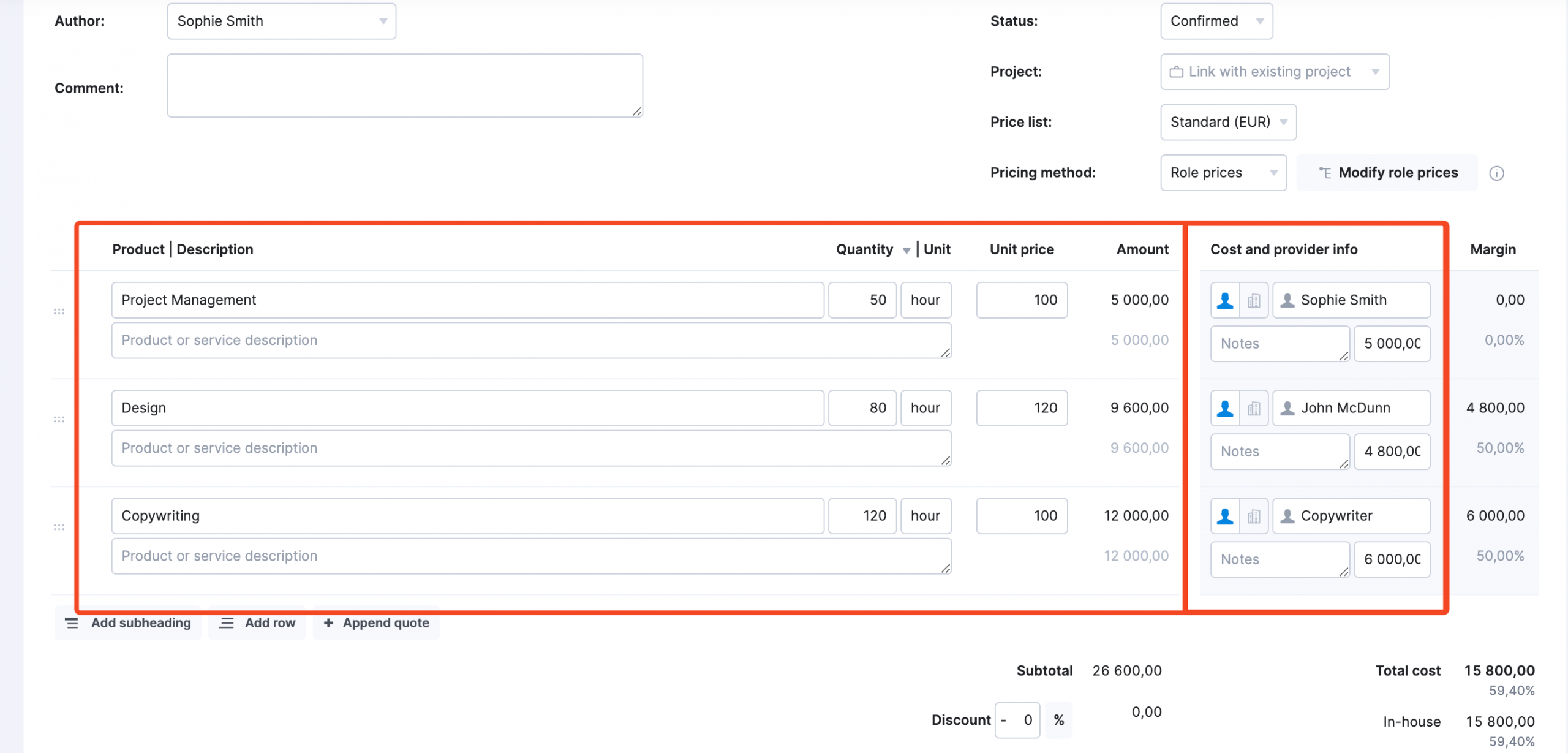
2. Staff with intention: Assign for fit, not just availability
Once you’ve scoped deliverables and phases in the quote, the next step is making sure the right people—or at least the right roles—are lined up to deliver them.
The wrong person on the wrong project kills profitability, especially when you have senior staff working on projects that are too basic.
For instance, a senior social media strategist can write Instagram captions for $50/hour. But it’s not the best use of their time.
Hans Scheffer, CEO at Hello Print, learned this lesson the hard way:
I’ve seen projects where senior team members handled tasks that could easily have been managed by juniors. They did the job, but it cost us and destroyed the margins, all because of poor resource planning.
Here’s how to staff projects profitably:
- Assign based on expertise, not convenience: Focus on skills rather than blindly assigning work based on who’s free
- Plan staffing at the role level first: Use placeholder roles before assigning specific individuals for more flexibility
- Avoid mismatched seniority: Don’t waste senior time doing junior work, but do use seniors to oversee and mentor junior team members on appropriate projects
In the “Cost and provider info” section of your Scoro quote, make sure to link each deliverable to the role or team member most likely to handle it.

Use the “matrix” view when a deliverable needs multiple roles.
For example, a “Landing page development” phase might include a developer for build and a copywriter for content.
Each person’s hours and rates roll up into one line item, making both effort and margin visible at a glance:
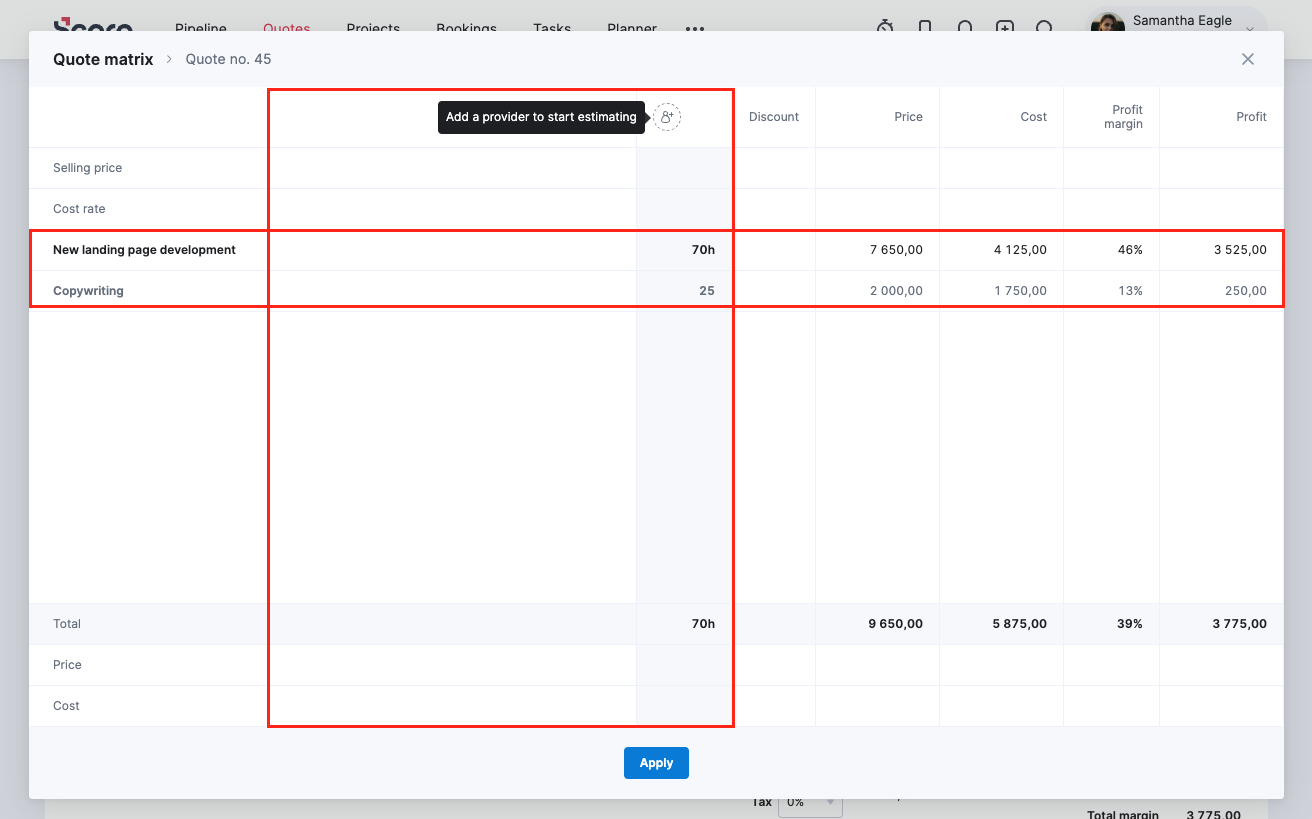
When you turn the quote into a project, tentative bookings (in blue) are created automatically in the project’s “Bookings” tab.
This shows how the quoted hours are spread across the project timeline and highlights role utilization at a project level.
The heatmap shows utilization by role, so you can see potential conflicts before you finalize pricing.
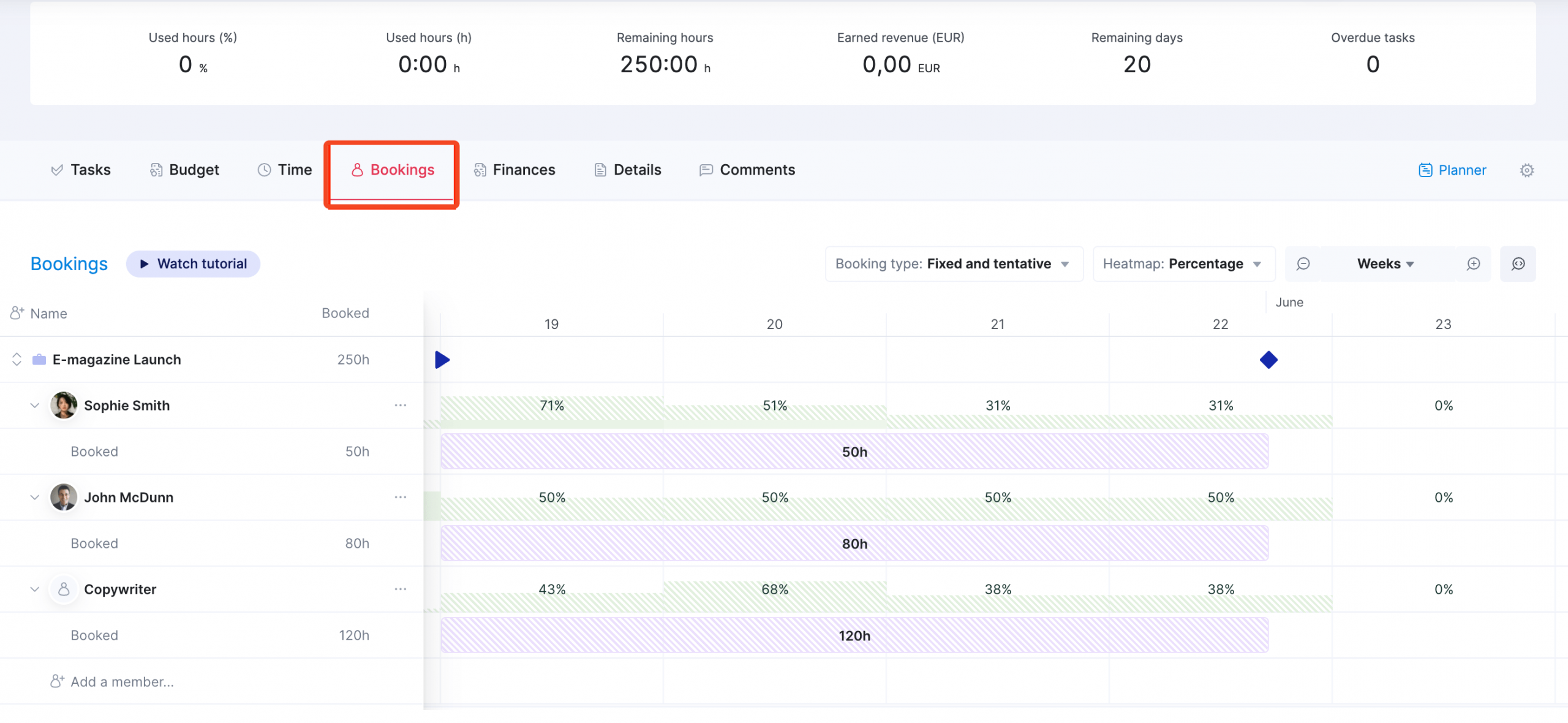
To validate those hours across your entire portfolio, step into the “Bookings” module from your main navigation.
he utilization heatmap here shows availability across all roles and people, so you can catch conflicts before finalizing pricing.
For example, you might see that John is already overbooked in October, so it makes sense to reassign those design tasks to Eva, who’s only at 25% capacity.
This way, your scoped hours aren’t just numbers in a quote. They’re grounded in your team’s actual capacity, giving you confidence before you move on to pricing.
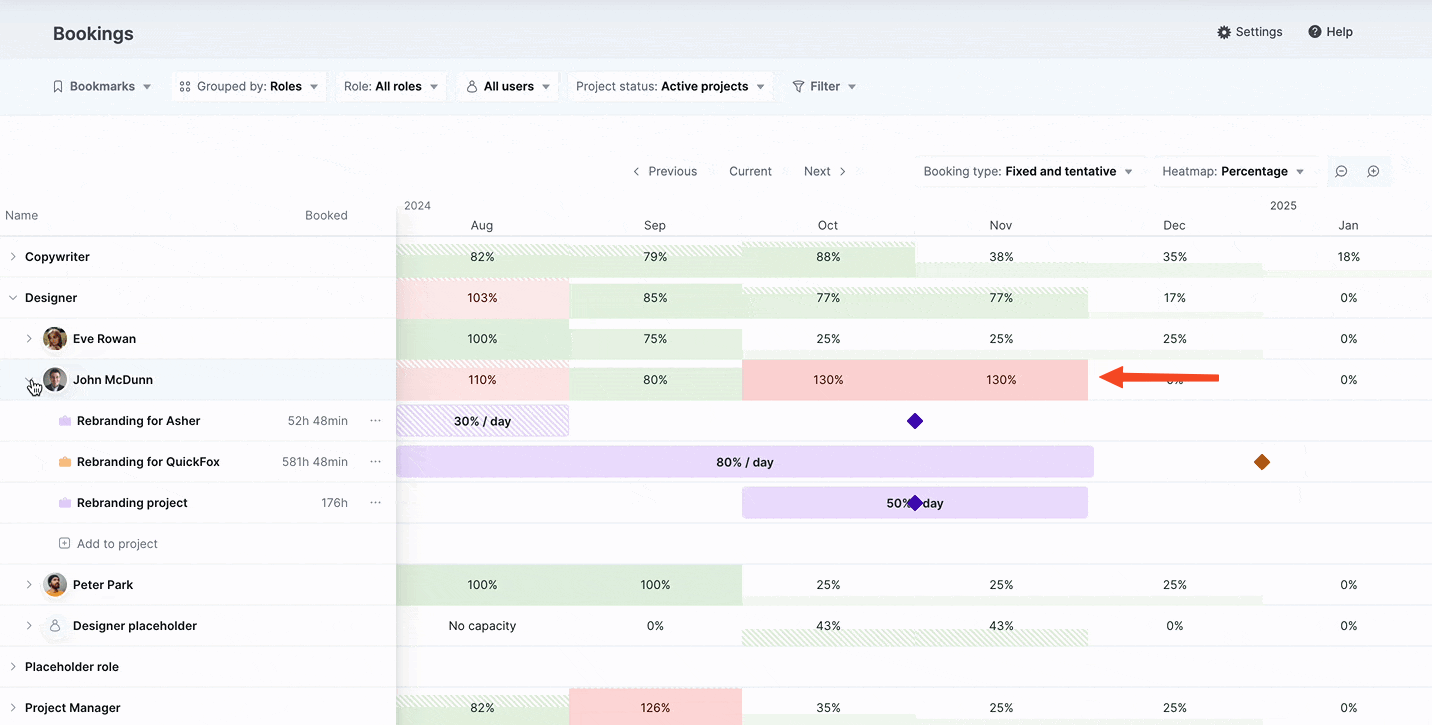
3. Quote realistically: Turn scoped work into accurate pricing
Now that you have clear deliverables, defined phases, and a staffing plan, you can build accurate estimates that protect your margins.
Without them, you’re forced to rely on gut feelings or rough comparisons to “similar projects,” leading to inaccurate estimates that don’t reflect reality.
A well-built quote shows you:
- Selling price: what the client will pay
- Cost rate: your internal delivery cost, based on role rates or service prices
- Profit and margin: how much you stand to make on each deliverable, and overall
This visibility lets you catch problems early—for instance, a deliverable that looks profitable at the top line but only carries a 13% margin once costs are factored in.
The quote builder in Scoro pulls in everything you defined in Steps 1 and 2. Including deliverables, phases, roles, and hours—so you’re not re-entering data.
If a deliverable involves more than one role, like a landing page that needs both design and copywriting, their hours and rates combine into one line item.

On the bottom right-hand side of your quote, you’ll see unit prices, role costs, and profit margins for every deliverable.
As you adjust hours or swap roles, you instantly see the impact on both client price and your total margin. And you can override role rates at the quote level if a project requires different pricing than your defaults.
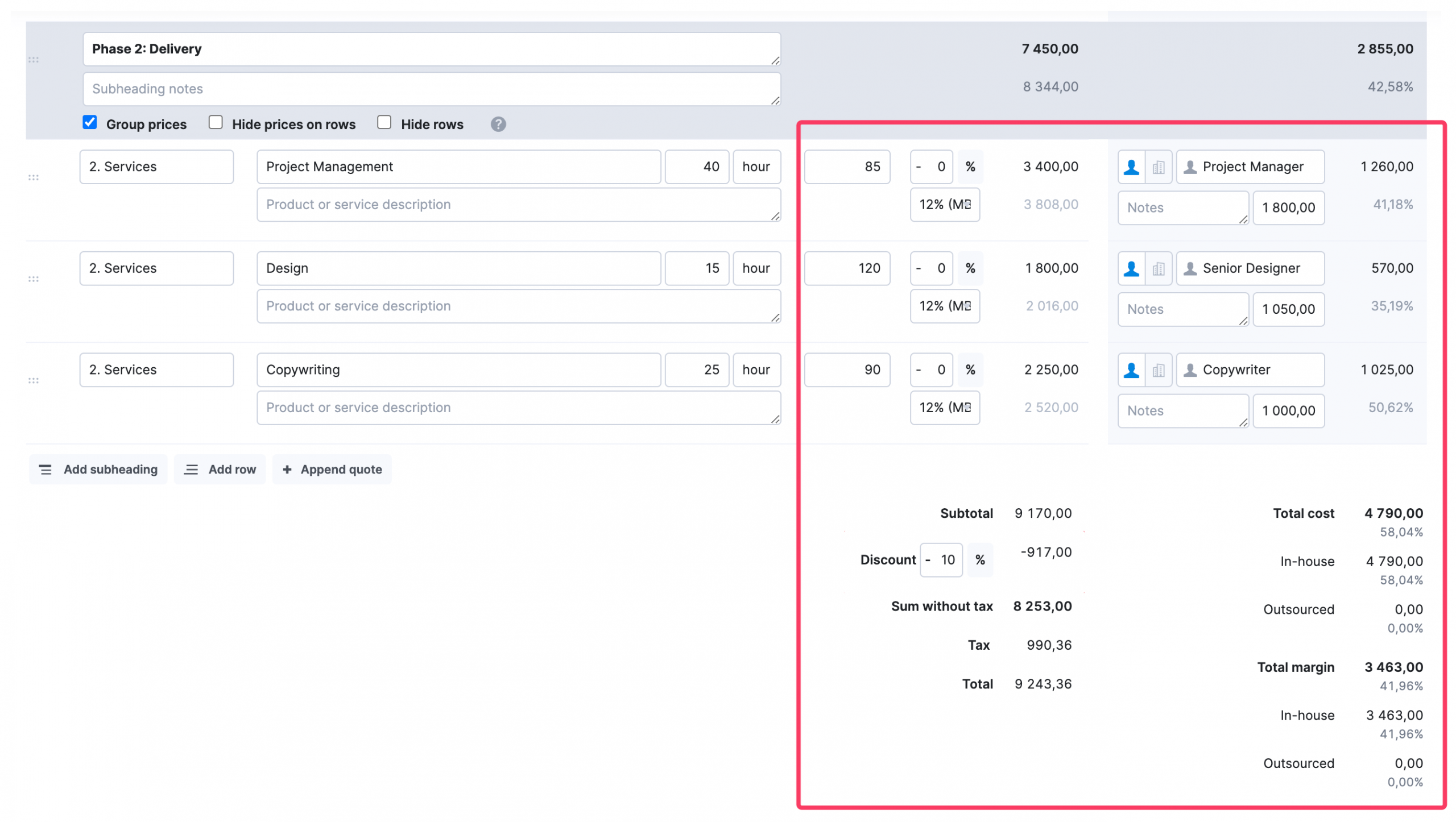
We also recommend using approval workflows to ensure accuracy and protect margins. For example, you might require review from the ops director for any quote over $10,000 before it goes out the door.
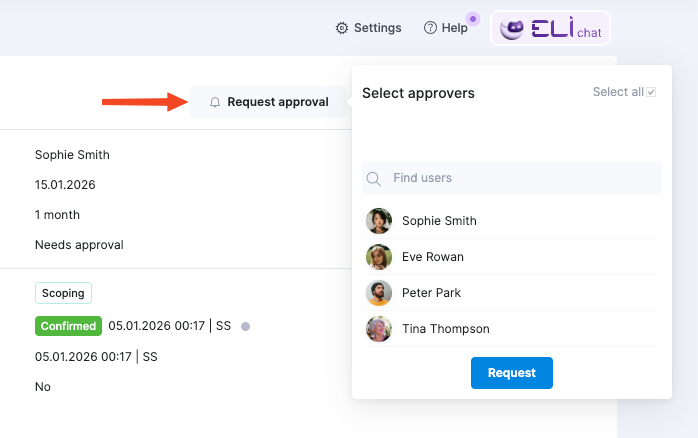
4. Control delivery: Spot burn early and course-correct fast
Don’t wait for the post-mortem to find out the project went over budget. The key is catching problems early when you can still do something about them.
Catch issues before your margins drop by:
- Monitoring burn at the deliverable level: Progress tracking works best when you focus on specific components, not just overall project health
- Setting budget thresholds: Internal reviews should kick in at clear markers—50%, 75%, 90% of budget—giving you multiple chances to course-correct
- Building in reviews: Regular check-ins help you realign timelines, resources, or expectations before small problems become big losses
Ali recommends scheduling reviews before the project launches to avoid headaches later on:
Add approval and asset deadlines into the client’s diary right from the project’s kick-off. That way, it’s agreed upfront that delivery relies on both sides.
Scoro’s “Budget health” chart tracks project burn in real-time. You will see two lines:
- Budget (blue) → what the client pays
- Budgeted cost (purple) → what delivery costs you
The forecast line projects where the margin will land. For example, the project below is forecasted to close at a 45% margin, down from the planned 52%. That’s your early warning sign.
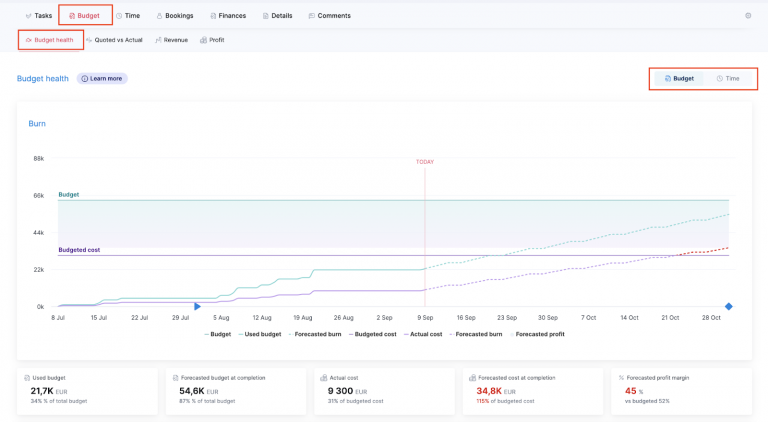
After noticing that, you could proactively investigate the issue and get finances under control before the project ends by:
- Reallocating work to more cost-effective team members
- Negotiating an expanded budget with the client to account for scope creep
- Implementing stricter time controls on remaining deliverables
To dive further into which specific roles or services are exceeding their budget, scroll down to the “Breakdown” chart.
Here, you can see which roles or services are drifting. For example, the Designer role is forecasted to cost $12,400, above the original budget of $10,800. Not catastrophic, but if left unchecked it will quietly erode profit.
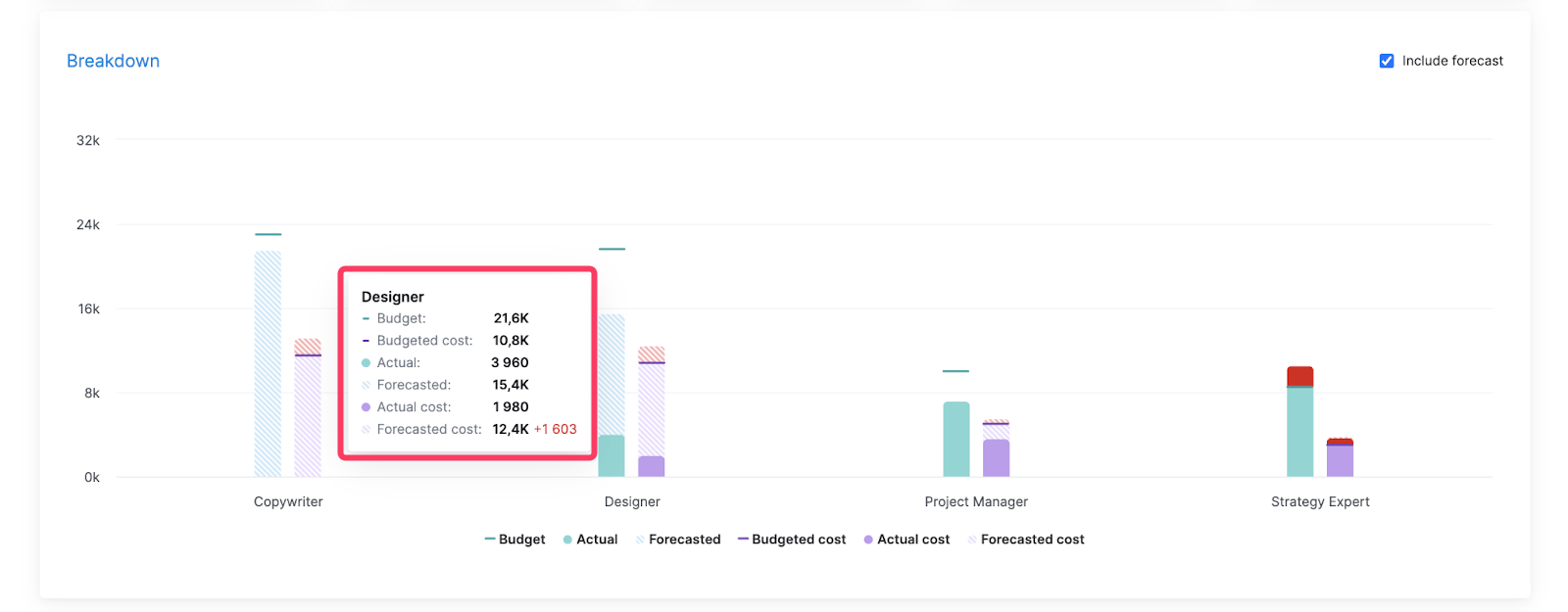
Further reading: 10 Causes of Project Cost Overruns and How to Solve Them
Stop project overrun at the source
Project overrun happens when you scope vaguely, price optimistically, staff carelessly, and track reactively. The damage gets done long before anyone logs a single hour.
Design de Plume learned this the hard way. The creative agency was losing money through over-servicing and scope creep, but had no visibility to catch problems early.
But after switching to Scoro, the agency gained real-time budget visibility and greater delivery control—and project profitability increased by over 20%.
Ready to boost your bottom line? Try Scoro for free for 14 days.






